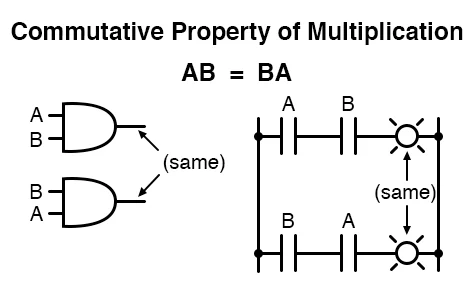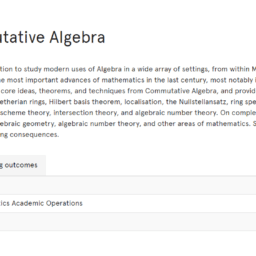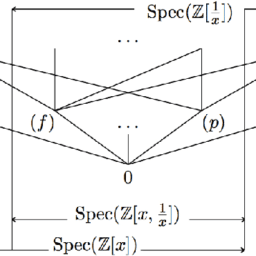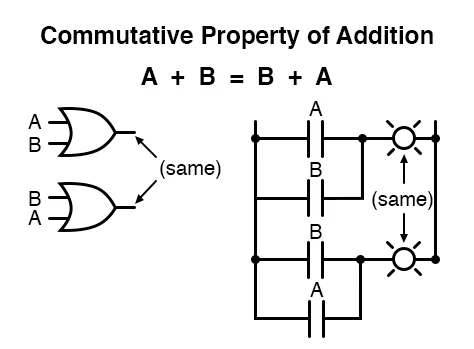MY-ASSIGNMENTEXPERT™可以为您提供sydney MATH4312 Commutative Algebra交换代数课程的代写代考和辅导服务!
这是悉尼大学交换代数课程的代写成功案例。
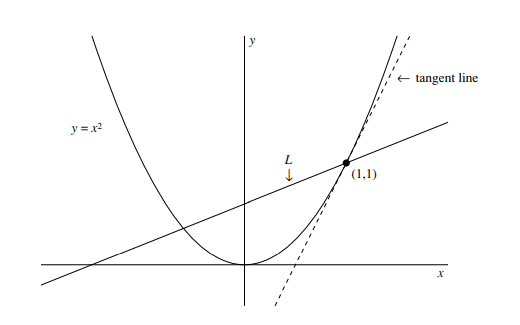
MATH4312课程简介
Commutative Algebra provides the foundation to study modern uses of Algebra in a wide array of settings, from within Mathematics and beyond. The techniques of Commutative Algebra underpin some of the most important advances of mathematics in the last century, most notably in Algebraic Geometry and Algebraic Topology. This unit will teach students the core ideas, theorems, and techniques from Commutative Algebra, and provide examples of their basic applications. Topics covered include affine varieties, Noetherian rings, Hilbert basis theorem, localisation, the Nullstellansatz, ring specta, homological algebra, and dimension theory. Applications may include topics in scheme theory, intersection theory, and algebraic number theory. On completion of this unit students will be thoroughly prepared to undertake further study in algebraic geometry, algebraic number theory, and other areas of mathematics. Students will also gain facility with important examples of abstract ideas with far-reaching consequences.
Prerequisites
At the completion of this unit, you should be able to:
- LO1. Demonstrate an understanding of key concepts in commutative algebra and its connections to algebraic geometry.
- LO2. Apply these concepts to solve qualitative and quantitative problems in mathematical contexts, using appropriate mathematical techniques as necessary.
- LO3. Distinguish and compare the properties of different types of rings, analysing them into constituent parts.
- LO4. Formulate geometric problems and algebraic terms and determine the appropriate framework to solve them.
- LO5. Synthesise knowledge from fundamental theorems in commutative algebra and use this to prove new results.
- LO6. Demonstrate a broad understanding of important concepts in commutative algebra and exercise critical thinking in recognising and using these concepts to draw conclusions and analyse examples.
- LO7. Communicate coherent mathematical arguments appropriately to student and expert audiences, both orally and through written work.
MATH4312 Commutative Algebra HELP(EXAM HELP, ONLINE TUTOR)
Problem: Given $f_1, \ldots, f_k \in K\left[x_1, \ldots, x_n\right]$, we want to assure whether the system of polynomial equations
$$
f_1(x)=\cdots=f_k(x)=0
$$
has a solution in $\bar{K}^n$, where $\bar{K}$ is the algebraic closure of $K$.
Solution: By Hilbert’s Nullstellensatz, $V(I)=\emptyset$ if and only if $1 \in I$. We compute a Gröbner basis $G$ of $I$ with respect to any global ordering on $\operatorname{Mon}\left(x_1, \ldots, x_n\right)$ and normalize it (that is, divide every $g \in G$ by $\mathrm{LC}(g)$ ). Since $1 \in I$ if and only if $1 \in L(I)$, we have $V(I)=\emptyset$ if and only if 1 is an element of a normalized Gröbner basis of $I$. Of course, we can avoid normalizing, which is expensive in rings with parameters. Since $1 \in I$ if and only if $G$ contains a non-zero constant polynomial, we have only to look for an element of degree 0 in $G$.
Problem: Let $f_1, \ldots, f_k \in K[x]{>},>$a monomial ordering on $\operatorname{Mon}\left(x_1, \ldots, x_n\right)$ and $I=\left\langle f_1, \ldots, f_k\right\rangle{K[x]{>}}$. Given some $f \in K[x]{>}$we want to decide whether $f \in \sqrt{I}$. The following lemma, which is sometimes called Rabinowich’s trick, is the basis for solving this problem. ${ }^{10}$
Lemma 1.8.8. Let $A$ be a ring, $I \subset A$ an ideal and $f \in A$. Then
$$
f \in \sqrt{I} \Longleftrightarrow 1 \in \tilde{I}:=\langle I, 1-t f\rangle_{A[t]}
$$
where $t$ is an additional new variable.
Proof. If $f^m \in I$ then $t^m f^m \in \tilde{I}$ and, hence,
$$
1=t^m f^m+\left(1-t^m f^m\right)=t^m f^m+(1-t f)\left(1+t f+\cdots+t^{m-1} f^{m-1}\right) \in \tilde{I} .
$$
Conversely, let $1 \in \tilde{I}$. Without loss of generality, we may assume that $f$ is not nilpotent since, otherwise, $f$ is clearly in $\sqrt{I}$.
By assumption, there are $f_1, \ldots, f_k \in I$ and $a_i(t)=\sum_{j=0}^{d_i} a_{i j} t^j \in A[t]$, $i=0, \ldots, k$ such that
$$
1=\sum_{i=1}^k a_i(t) f_i+a_0(t)(1-t f) .
$$
Since $f$ is not nilpotent we can replace $t$ by $1 / f$ and obtain
$$
1=\sum_i a_i\left(\frac{1}{f}\right) f_i=\sum_{i, j} a_{i j} f^{-j} f_i
$$
in the localization $A_f$, see Section 1.4. Multiplying with $f^m$, for $m$ sufficiently large, we obtain $f^m=\sum_{i, j}\left(a_{i j} f^{m-j}\right) f_i \in I$ (even in $A$, not only in $\left.A_f\right)$.
Solution: By Lemma 1.8.8, we have $f \in \sqrt{I}$ if and only if
$$
1 \in J:=\left\langle f_1, \ldots, f_k, 1-t f\right\rangle\left(K[x]{>}\right)[t],
$$
where $t$ is a new variable. To solve the problem, we choose on $\operatorname{Mon}\left(t, x_1, \ldots, x_n\right)$ an elimination ordering for $t$ inducing $>^{\prime}$ on $\operatorname{Mon}\left(x_1, \ldots, x_n\right)$ such that $K[x]{>}=K[x]_{>}$ (for example, take $(\operatorname{lp}(1),>)$ ) and compute a standard basis $G$ of $J$. Then $f \in \sqrt{I}$ if and only if $G$ contains an element $g$ with $\operatorname{LM}(g)=1$.
Problem: Given $f_1, \ldots, f_k, h_1, \ldots, h_r \in K[x]$ and $>$ a monomial ordering. Let $I_1=\left\langle f_1, \ldots, f_k\right\rangle K[x]{>}$and $I_2=\left\langle h_1, \ldots, h_r\right\rangle K[x]{>}$. We wish to find generators for $I_1 \cap I_2$.
Consider the ideal $J:=\left\langle t f_1, \ldots, t f_k,(1-t) h_1, \ldots,(1-t) h_r\right\rangle\left(K[x]{>}\right)[t]$. Lemma 1.8.10. With the above notations, $I_1 \cap I_2=J \cap K[x]{>}$.
Proof. Let $f \in J \cap K[x]{>}$, then $$ f(x)=t \cdot \sum{i=1}^k a_i(t, x) f_i(x)+(1-t) \sum_{j=1}^r b_j(t, x) h_j(x) .
$$
Since the polynomial $f$ is independent of $t$, we have $f=\sum_{i=1}^k a_i(1, x) f_i \in I_1$ and $f=\sum_{j=1}^r b_j(0, x) h_j \in I_2$, hence $f \in I_1 \cap I_2$. Conversely, if $f \in I_1 \cap I_2$, then $f=t f+(1-t) f \in J \cap K[x]_{>}$.
Solution: We choose an elimination ordering for $t$ on $\operatorname{Mon}\left(t, x_1, \ldots, x_n\right)$ inducing $>^{\prime}$ on $\operatorname{Mon}\left(x_1, \ldots, x_n\right)$ such that $K[x]{>\prime}=K[x]{>}$(for example, take $(1 \mathrm{p}(1),>))$. Then we compute a standard basis of $J$ and get generators for $J \cap K[x]_{>}$as in Section 1.8.2
Problem: Let $I_1$ and $I_2 \subset K[x]{>}$be as in Section 1.8.7. We want to compute $$ I_1: I_2=\left{g \in K[x]{>} \mid g I_2 \subset I_1\right} .
$$
Since, obviously, $I_1:\left\langle h_1, \ldots, h_r\right\rangle=\bigcap_{i=1}^r\left(I_1:\left\langle h_i\right\rangle\right)$, we can compute $I_1:\left\langle h_i\right\rangle$ for each $i$ and then apply SINGULAR Example 1.8.11. The next lemma shows a way to compute $I_1:\left\langle h_i\right\rangle$.
Lemma 1.8.12. Let $I \subset K[x]{>}$be an ideal, and let $h \in K[x]{>}, h \neq 0$. Moreover, let $I \cap\langle h\rangle=\left\langle g_1 \cdot h, \ldots, g_s \cdot h\right\rangle$. Then $I:\langle h\rangle=\left\langle g_1, \ldots, g_s\right\rangle_{K[x]_{>}}$.
Proof. Any set of generators of $I \cap\langle h\rangle$ is of the form $\left{g_1 h, \ldots, g_s h\right}$. Therefore, $h\left\langle g_1, \ldots, g_s\right\rangle \subset I$, hence $\left\langle g_1, \ldots, g_s\right\rangle \subset I:\langle h\rangle$. Conversely, if $g \in I:\langle h\rangle$, then $h g \in I \cap\langle h\rangle$ and $h g=h \cdot \sum_i a_i g_i$ for some $a_i$. Since $K[x]_{>}$has no zerodivisors and $h \neq 0$, we have $g=\sum_i a_i g_i$ which proves the claim.
Solution 1: We can compute $I_1: I_2$ by computing, for $i=1, \ldots, r, I_1 \cap\left\langle h_i\right\rangle$ according to Section 1.8.7, divide the generators by $h_i$ getting $I_1:\left\langle h_i\right\rangle$ and compute the intersection $\bigcap_i\left(I_1:\left\langle h_i\right\rangle\right)$, according to Section 1.8.7.
Instead of computing $\bigcap_i\left(I_1:\left\langle h_i\right\rangle\right)$, we can define
$$
h:=h_1+t_1 h_2+\cdots+t_{r-1} h_r \in K\left[t_1, \ldots, t_{r-1}, x_1, \ldots, x_n\right]
$$
and obtain
$$
I_1: I_2=\left(I_1\left(K[x]{>}\right)[t]:\langle h\rangle\right) \cap K[x]{>} .
$$
This holds, since $g(x) \in I_1:\langle h\rangle$ if and only if
$$
g(x)\left(h_1(x)+t_1 h_2(x)+\cdots+t_{r-1} h_r(x)\right)=\sum_{i=1}^k a_i(x, t) f_i(x)
$$
for some $a_i \in\left(K[x]{>}\right)[t]$, which is equivalent to $g(x) h_j(x) \in\left\langle f_1, \ldots, f_k\right\rangle{K[x]_{>}}$ for all $j$ (set $t_i:=0$ for all $i$, and then $t_j:=1$ and $t_i=0$ for $i \neq j$ ).
Solution 2: Define $h$ as above. We can compute $I_1:\langle h\rangle$ by Lemma 1.8 .12 and then $I_1: I_2$ by eliminating $t_1, \ldots, t_{r-1}$ from $I_1:\langle h\rangle$ according to Section 1.8.2.
The same procedure works with $h:=h_1+t h_2+t^2 h_3+\cdots+t^{r-1} h_r \in$ $\left(K[x]_{>}\right)[t]$ with just one new variable $t$ (Exercise 1.8.2).

MY-ASSIGNMENTEXPERT™可以为您提供STUDIER MAT4200 COMMUTATIVE ALGEBRA交换代数课程的代写代考和辅导服务!


